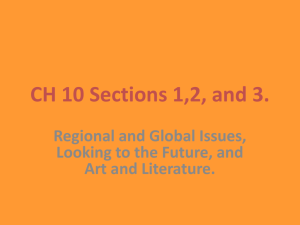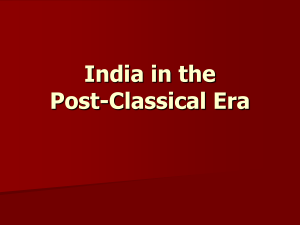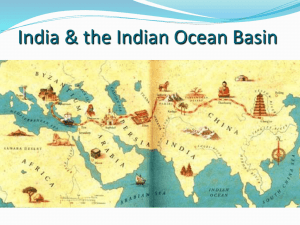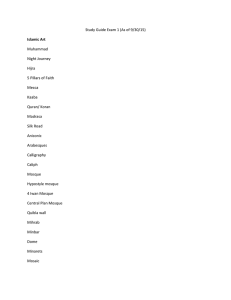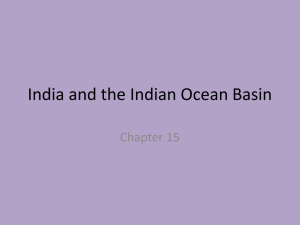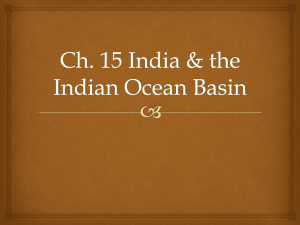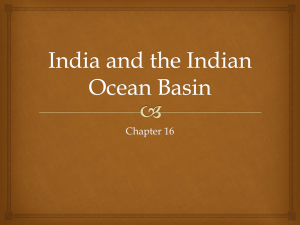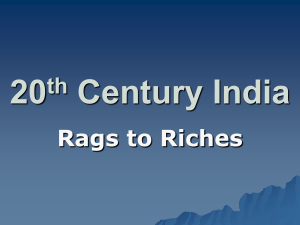India after the Guptas
advertisement
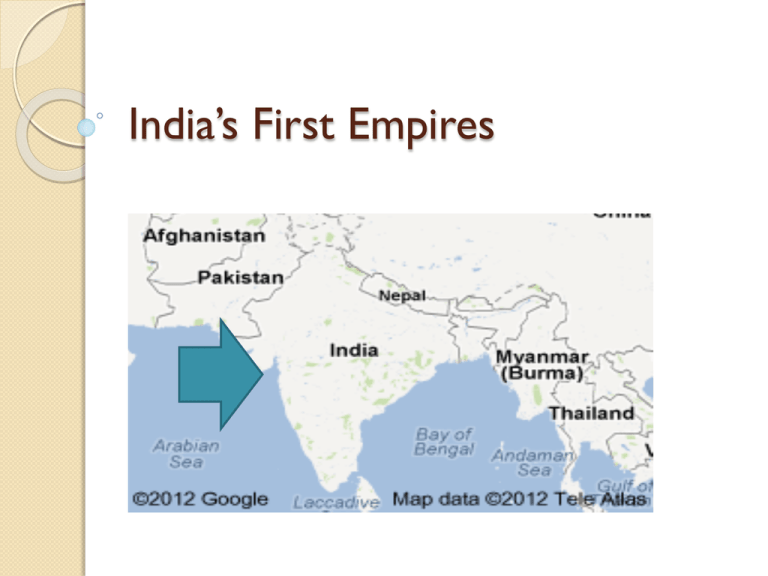
India’s First Empires India 3000 b.c.- 500 a.d. 3000-1500 B.C. early civilization. ◦ Indus River Valley-modern Pakistan; served as the cradle of Indian civilization. ◦ Two Regions The Northern Plain & Deccan Plateau. ◦ Three Rivers: Ganges River, Indus River and Brahmaputra -important to Indian culture. ◦ Himalaya –highest mountains in the world. Karakorum, Hindu Kush India’s First Civilization Harappa and Mohenjo-Daro ◦ Two Indian civilizations Rulers Divine Right ◦ Religion and Political Power tied together. Economy based on farming. Extensive trade Aryans Who were the Aryans? ◦ Indo-Europeans who came south across the Hindu Kush mountain range. Pastoral people with strong warrior tradition. ◦ Nomadic people who developed their own written language called SANSKRIT Rajas: princes who controlled small kingdoms in India. India’s Social System Caste System ◦ Rigid social categories. ◦ Based on a person’s occupation and extended family network. Social Classes (varnas) Brahmans= in charge of religious ceremonies. Kshatriyas= warriors Vaisyas= commoners (merchants and farmers) Sudras= peasants/labor Untouchables= not considered human Family in India Family basic unit of society. ◦ Extended family. Superiority of males. Guru: teacher (generally only males were educated. Divorce was not allowed. Arranged marriages (with dowry) Suttee: a ritual in which a wife threw herself on her husband’s funeral pyre. Mauryan (MAH-oor-yuh) Dynasty 321 BCE – 185 BCE Chandragupa Maurya ◦ Centralized government Empire divided into provinces, ◦ Ruled by governors Large army and a secret police ◦ Political assassinations… Asoka Chandragupta’s grandson. Greatest ruler in history of India. ◦ Converted to Buddhism(set up hospitals, and shelters for travelers). ◦ Trade expanded Asoka’s Pillar Guptas (320 CE – 535) Dominant in northern India after the Mauryan Empire. Chandra Gupta- leader of Gupta, the second empire. Admired for their tolerance of Buddhism and prosperity of the country. Much wealth came from pilgrims. “Golden Age of India” ◦ Arts, mathematics, literature Indian families patriarchal. ◦ Southern India were matriarchal. Invaded by Huns from the northwest After the Guptas Believers of Buddhism split. ◦ Theravada- “teachings of the elders” Way of life, not a religion, Understanding oneself is the chief way to gain virvana. ◦ Mahayana- stressed that nirvana could be achieved through devotion to the Buddha. Believed Theravada too strict, Buddhism is a religion, not a philosophy, Buddha divine Nirvana a true heaven Both declined. Expansion of Islam in India In Northwest India. ◦ Division of the subcontinent into mostly Hindu India and two Islamic states, Bangladesh and Pakistan. Expansion of Islam Islam arrived when there was a lot of division in India. ◦ India had been divided into 70 states (and they fought each other constantly!) 10th century Islamic expansion. ◦ New Islamic state known as Ghazni (in Afghanistan) is founded. ◦ By 1200, Muslim power had reached over the entire plain of northern India. A new Muslim state known as the Sultanate of Delhi was formed. Timur Lenk Military force crossed the Indus River and raided the capital of Dellhi. ◦ 100,000 Hindu prisoners were massacred Timur Lenk (Tamerlane) ◦ Mongol ruler in Samarkand. ◦ 1380s placed the entire region east of the Caspian Sea under his authority and then occupied Mesopotamia. ◦ Died in 1405 Islam and Indian Society Strict separation b/w Muslim ruling class and Hindu population. Many Muslim rulers were intolerant of other faiths. ◦ Peaceful means to convert people to Islam, but some destroyed Hindu temples. Economy and Daily Life Peasant farmers Landed elites and merchants lived in cities. Farming and trade were important. Indian Culture Temples (Hindu) Indian Culture Sanskrit Prose ◦ 6-7th centuries. ◦ Dandin The Ten Princes Created a fantastic world.

